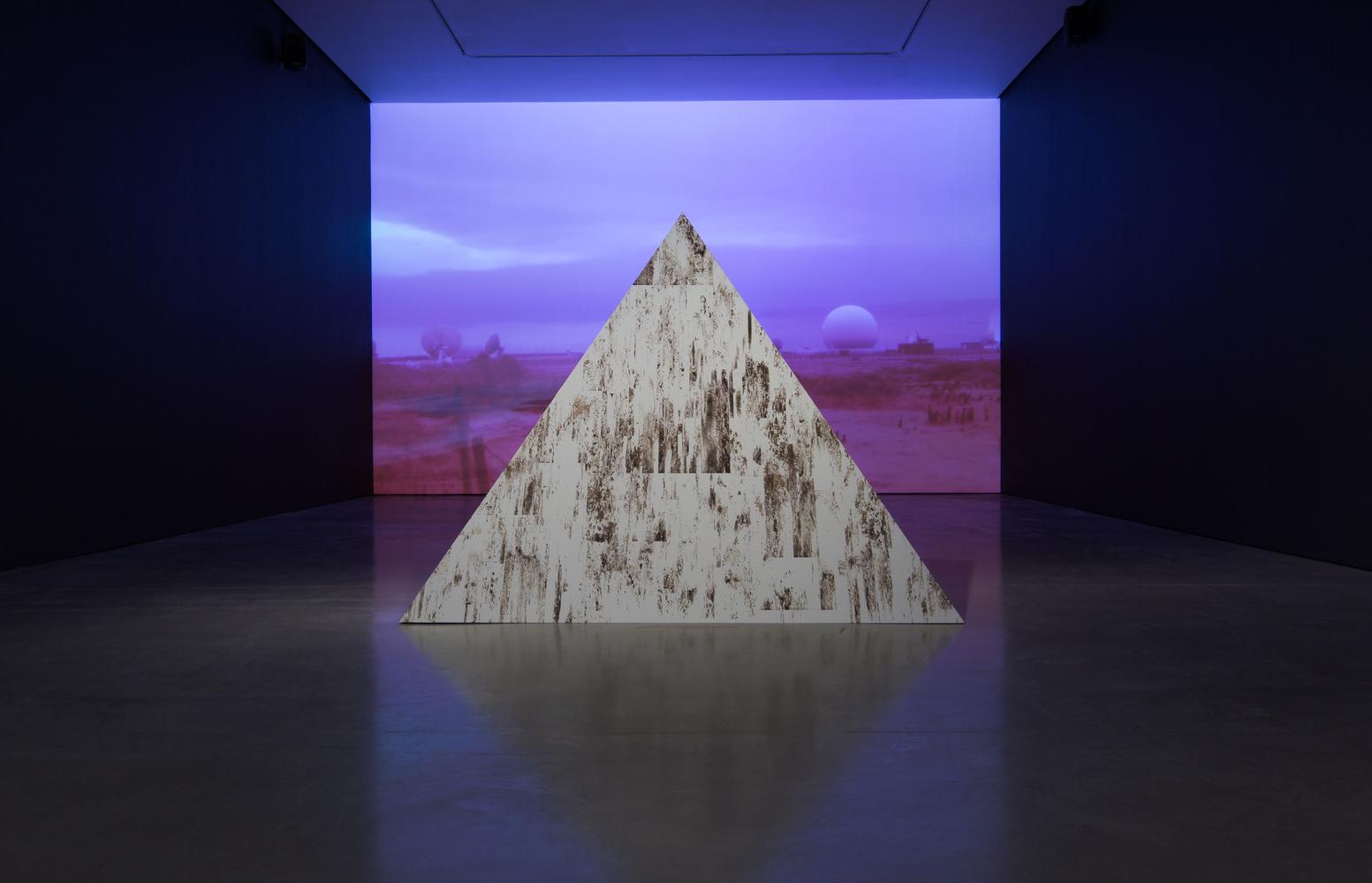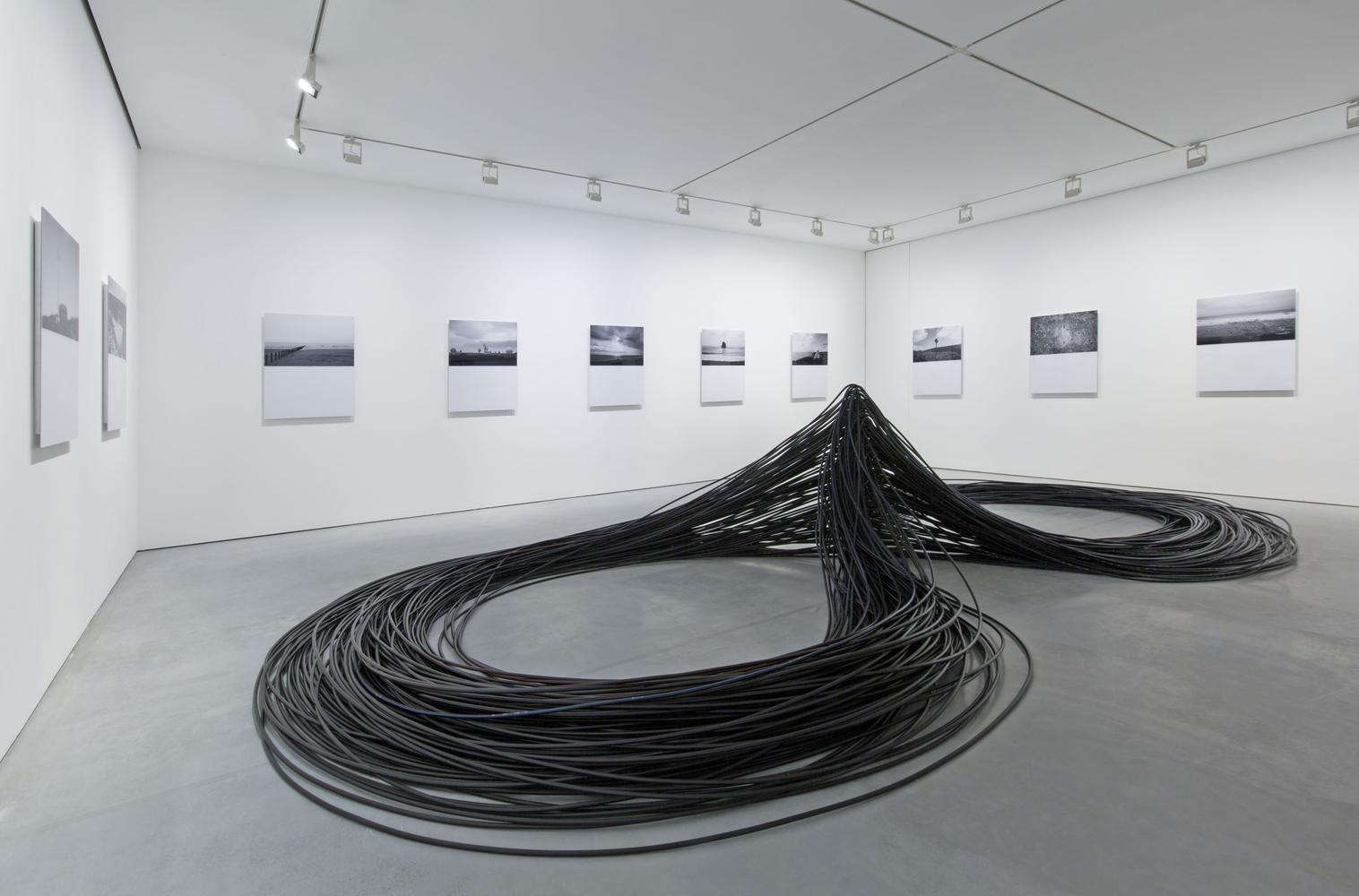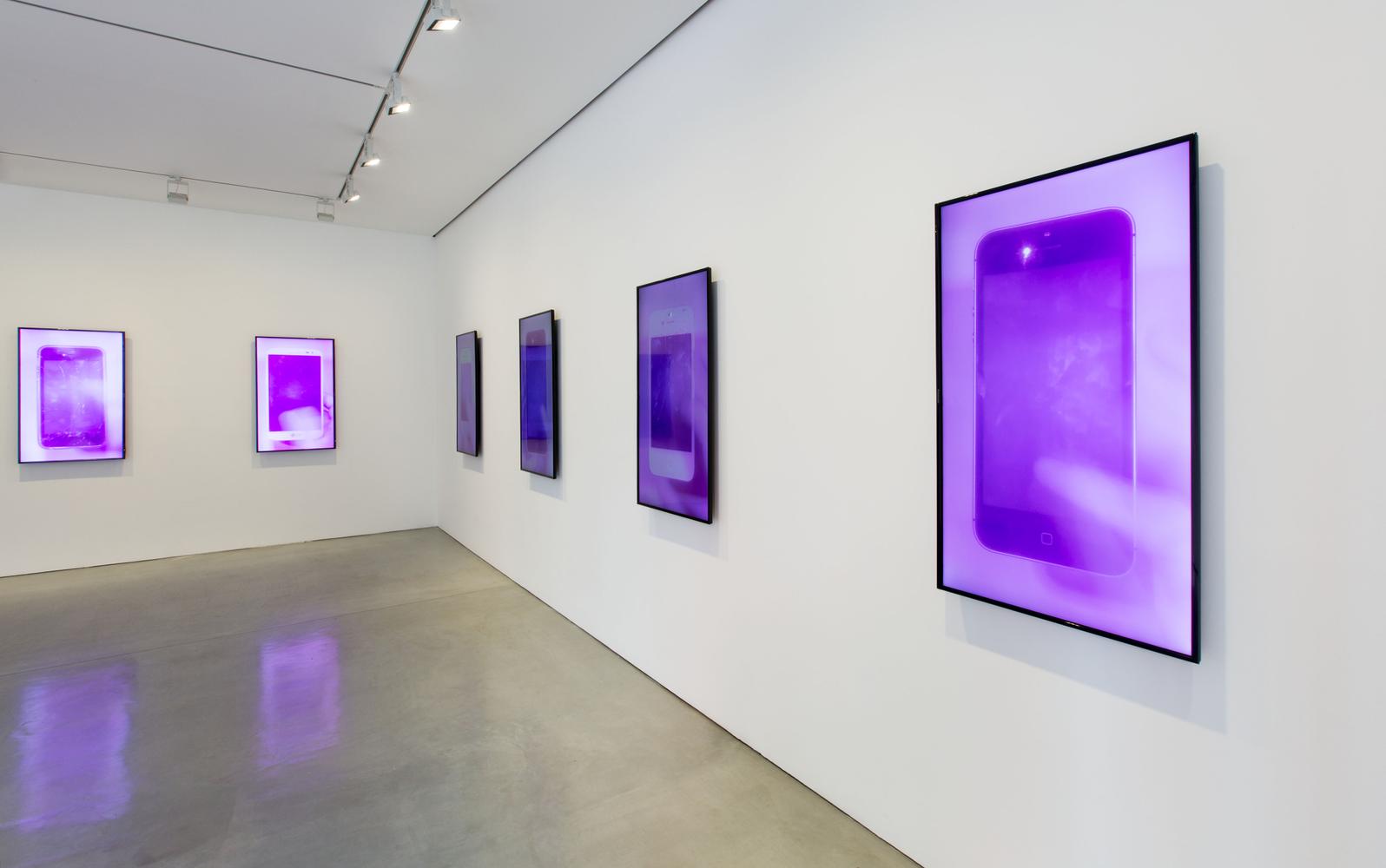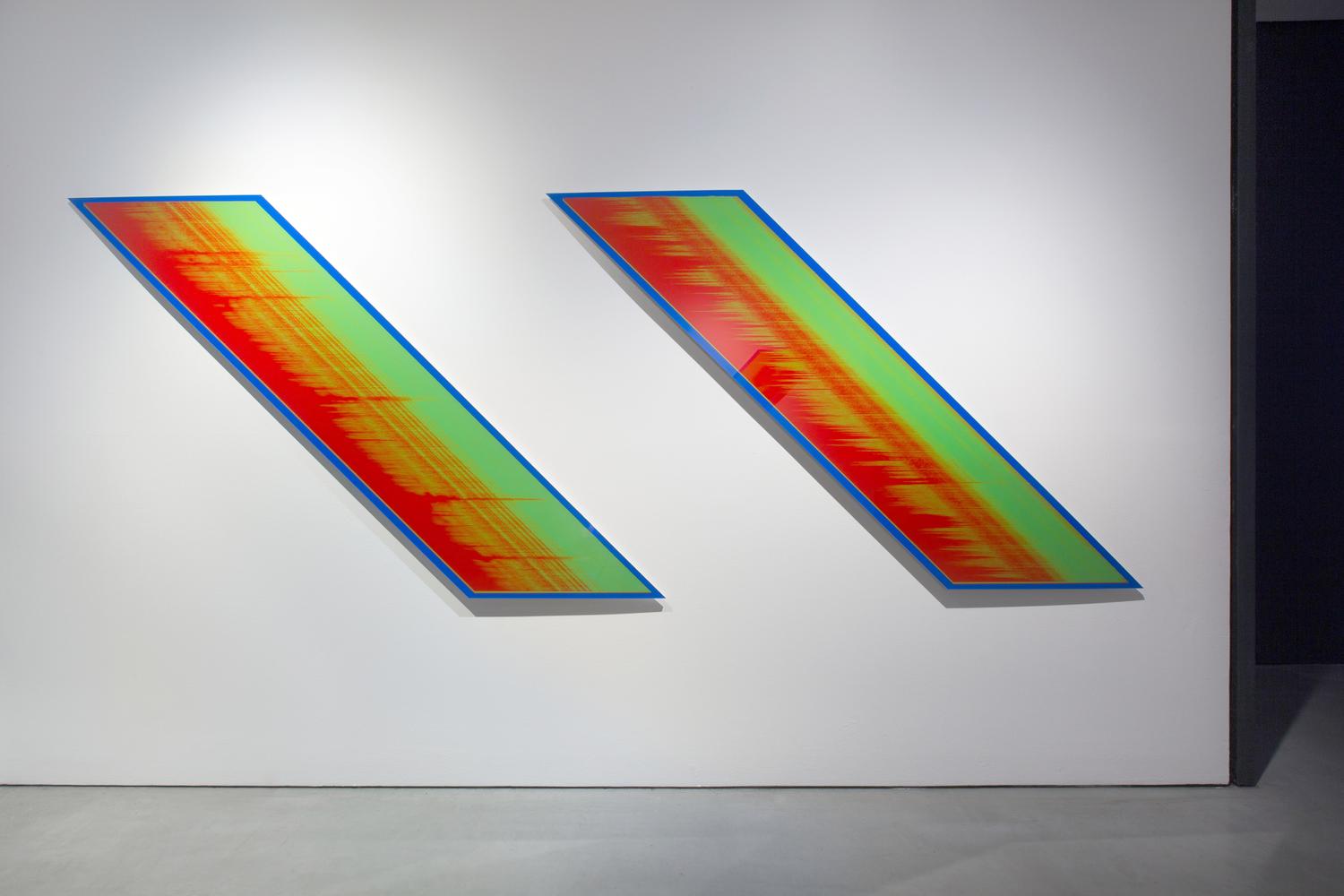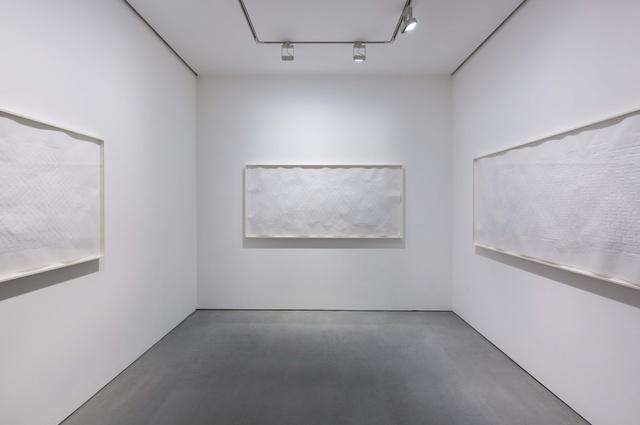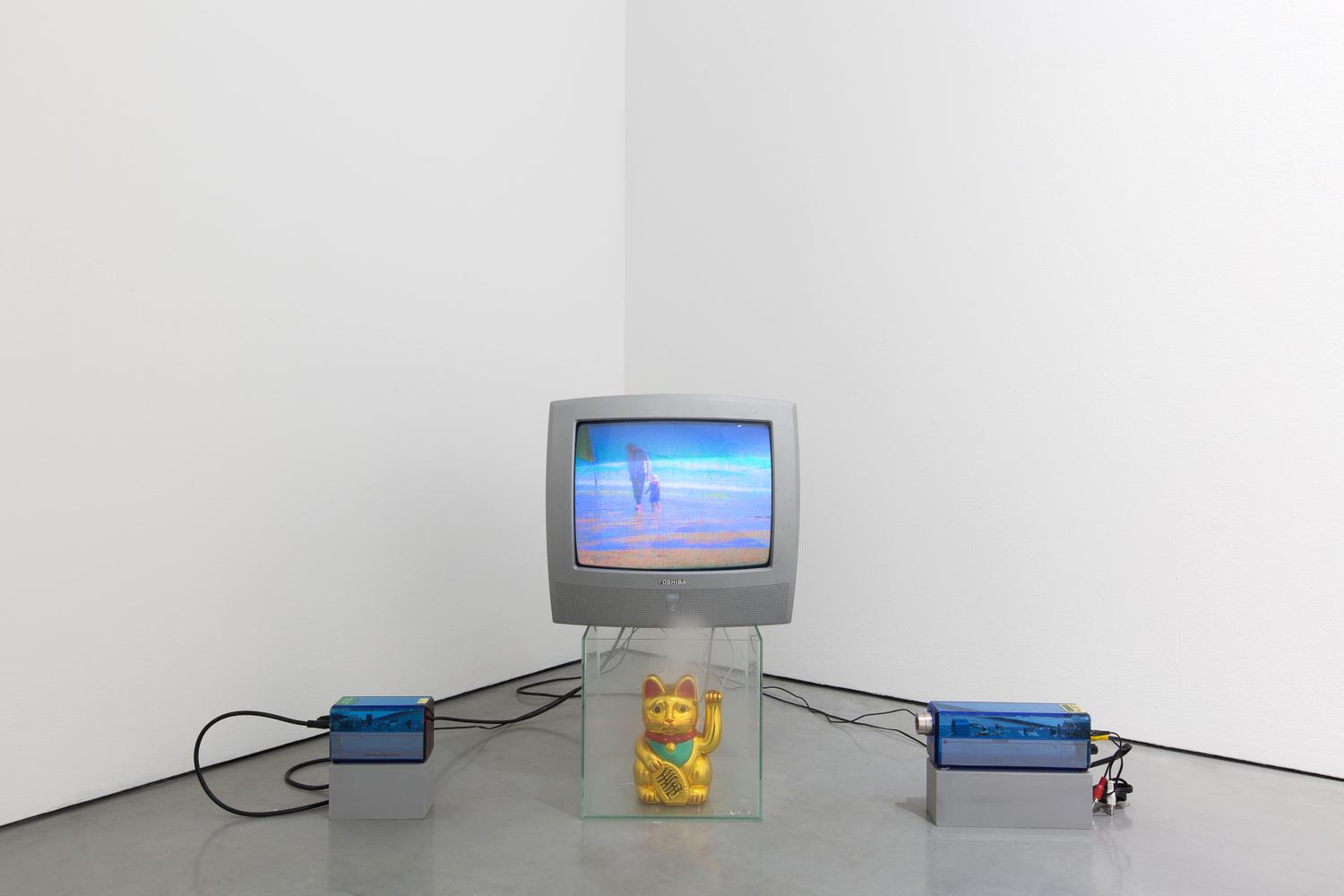Voices Over the Horizon
- Benben, Digital print on dibond, 2015
- Total Internal Reflection, Single-channel video, 09:46, 2015
- Burial Ceremony, 2km of GYTA53 direct bury fibre-optic cable, 120cm x 690cm x 330cm, 2015
- 50.043840, -5.649393, Landscape series, Laser-etched Lambda prints face mounted on acrylic with dibond backing, 2015
- Dances for Mobile Phones series, single-channel videos, 2015
- The Veil of Isis, Levitation device and satellite navigation system, 2015
- Sonogram series, Lambda prints face mounted on acrylic with dibond backing, 2015
- Web Portal series, Embossed paper, 2015
- To the Waters and the Wild, Single-channel video, mixed media, 2015
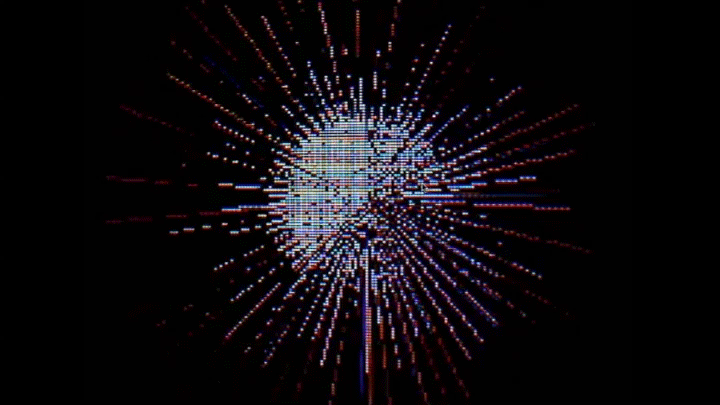
- voicesoverthehorizon.com, Website, 2015
Info
| Title: | Voices Over the Horizon |
| Institution: | Carroll/Fletcher |
| Date: | March 5 - April 11, 2015 |
| Location: | London, UK |
Text
When the first transatlantic telegraph cables came ashore at Porthcurno, Cornwall, in 1866, allowing messages to be sent across continents and oceans in a matter of seconds for the first time, many believed they were witnessing the most momentous innovation in human history. For a world that had waited weeks to receive messages across the ocean, it must have seemed like the closest thing to magic to suddenly have access to the instantaneous exchange of communication in the complete absence of physical bodies. Within living memory for many of us today, the advent of email and the Internet struck a similar chord. Indeed, Evan Roth remembers his first experiences with html in the late 90s as brimming 'with feelings of empowerment and the prospect of unlimited possibilities'. The web offered a free space of untold potential.
Twenty years on, we find an Internet landscape that departs greatly from such utopian expectations. There has been a radical shift away from a decentralised construct of personal websites, forums and peer-to-peer file sharing networks and towards a more centralised system dominated by the likes of Facebook, Amazon and Google. Moreover, the revelations made public by Edward Snowden in 2013 proved beyond doubt that, far from being a free space, today's Internet has been dramatically affected by government surveillance and corporate interest. It is this jarring loss of innocence toward our relationship with the Internet, coupled with a desire to rediscover those initial feelings of optimism and wonder that provides the impetus behind this exhibition. In its essence, Voices over the Horizon began as an Internet pilgrimage.
In Autumn 2014, Roth set out on a road trip to Cornwall where the early telegraph cables have since been replaced with fibre-optic Internet cabling that is estimated to carry 25% of the world's Internet traffic. In his attempt to re-establish a spiritual connection to this seemingly invisible force swarming all around us, Roth turned to ghost-hunting and specifically ghost-hunting technologies. These strange looking devices, including full spectrum video cameras, thermal flashlights and electronic voice phenomenon recorders, were developed by a close-knit DIY community and not only lent themselves to Internet-focused modifications but also re-kindled a sense of mystery and wonder toward technology that he had not felt in some time. Like his ghost-hunting counterparts whose urgent enquiries into the supernatural were often conducted on sites of assumed paranormal activity, Roth ventured out with his ghost-hunting toolkit into the landscape that physically hosts the Internet, in a personal quest to visualise and reconnect with what has become so integral to contemporary life; making sense of a web which feels less dynamic, less chaotic, more centralised and more controlled.
— Carroll/Fletcher
Press
- Liberation, Evan Roth, debris de fond, 2015
- Vice/the Creators Project, Artist Evan Roth Used Ghost Hunting Equipment to Find the Physical Internet, 2015
- WIRED, Exploring the Internet with Ghost-Hunting Equipment, 2015
- PostMatter, A Quest for the Technologically Ephemeral, 2015
Related Media
- Exhibition documentation (video)
- Dances for Mobile Phones (videos)
- Total Internal Reflection (video)
Related Works
- Dances For Mobile Phones: Paraguay, 13 videos presented on two monitors, 61:08, 2015
- Landscapes series, Network located videos, 2016 - ongoing
